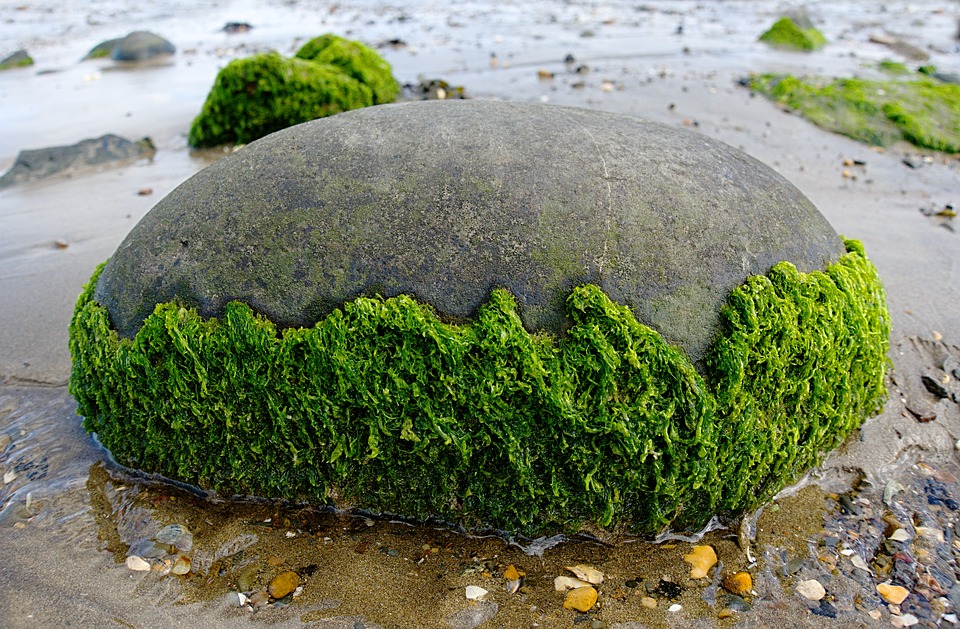Algae are primitive, primarily aquatic, one celled or multi-cellular plant like organisms that lack true stems, roots and leaves but usually contain chlorophyll. Algae are found in both marine and fresh water. Such as Chlorella,(complex fresh water) are Charophyta. Algae can range from the microscopic (microalgae), to large seaweeds (macroalgae), such as giant kelp more than one hundred feet in length.
Most microalgae grow through photosynthesis – by converting sunlight, CO2 and a few nutrients, including nitrogen and phosphorous, into material known as biomass. Algae are very diverse and found almost everywhere on the planet.
Global demand for macroalgal and microalgal foods is growing, and algae are increasingly. Algae is photosynthetic, eukaryotic characterized by high growth rates and high population densities. Under good conditions, green algae can double its biomass in less than 24 hr. Because of high yield, high density biomass is ideal for intensive agriculture and may excellent source for food.
Protein
Protein content differs widely across groups of algae. Various commercial species of the unicellular green alga Chlorella (Fig. 2) contain up to 70 % dry wt protein. Microalgae also have an amino acid profile that compares well with egg, notably containing all of the essential amino acids (EAA) that humans cannot synthesize and must obtain from foods
Some of the algae that are important
Chlorella
Chlorella is a micro-algae grown in water and is one of the few edible species of it’s kind.
- 58% of protein.
- A good amount of chlorophyll.
- A good source of minerals like iron, magnesium and zinc, as well as phosphorus, calcium, iodine, manganese, and potassium.
- A good source of vitamins A, C, E, K and B-complex.
- It is high in essential fatty acids..
- A good source of antioxidants, polysaccharides, beta carotene, and lutein.
Spirulina
Spirulina is a type of blue-green algae that is rich in protein, vitamins, minerals, carotenoids, and antioxidants that can help protect cells from damage. It contains nutrients, including B complex vitamins, beta-carotene, vitamin E, manganese, zinc, copper, iron, selenium, and gamma linolenic acid (an essential fatty acid).
It is largely made up of protein and essential amino acids, and is typically recommended to vegetarians due to its high natural iron content.
The high concentration of protein and iron also makes it ideal during pregnancy, after surgery, or anytime the immune system needs a boost.
It contains vitamins B-1(thiamine), B-2 (riboflavin), B-3(nicotinamide), B-6 (pyridoxine), B-9 (folic acid), vitamin C, vitamin D, vitamin A and vitamin E. It is also a source of potassium, calcium, chromium, copper, iron, magnesium, manganese, phosphorus, selenium, sodium and zinc. Spirulina contains many pigments which may be beneficial and bioavailable.
- Calories (81)
- Protein (39g)
- Dietary fiber (1g)
- Sugars (.9g)
Antioxidants: Spirulina microalgae could be a good source of antioxidants due to the presence of carotenoids deriving from chlorophyll, and provide bacterial growth inhibiting action because of certain fatty acids. Microalgae have turned out to be a potential alternative to the use of synthetic sources for these ingredients. Spirulina is a type of microalgae that naturally produces antioxidants (like carotenoids and Xanthophylls), and antimicrobial compounds like polysaccharides or fatty acids among other beneficial substances.
Anti-cancer effects of blue-green alga Spirulina: Spirulina platensis is a blue-green alga used as a dietary supplement because of its hypocholesterolemic properties. Among other bioactive substances, it is also rich in tetrapyrrolic compounds closely related to bilirubin molecule, a potent antioxidant and anti-proliferative agent. S. platensis and its tetrapyrrolic components substantially decreased the proliferation of experimental pancreatic cancer. These data support a chemopreventive role of this edible alga.
Source: NaturalNews.com, umm.edu, Dr. Axe, Sciencedaily, Ann Hepatol. 2014 Mar-Apr;13(2):273-83
